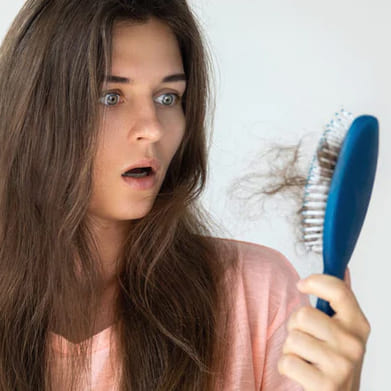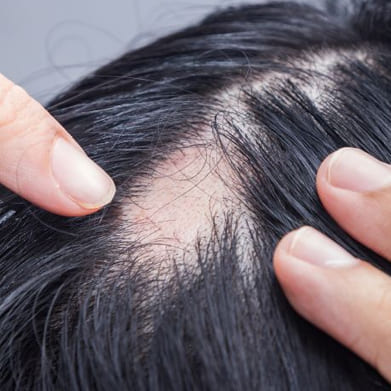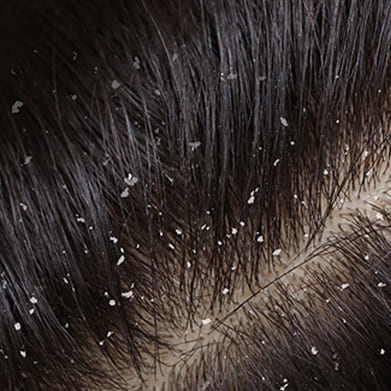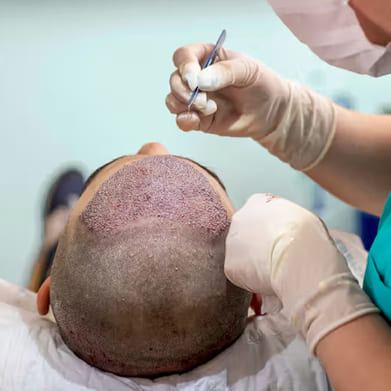Hair Treatement
All types of Hair Treatments are available in Skin 360 Clinic
Hair Fall
Hair fall, also known as hair loss or alopecia, can be caused by various factors including genetics, hormonal changes, medical conditions, medications, stress, and poor nutrition. Understanding the causes and treatments for hair fall is crucial for managing this condition effectively.

Causes of Hair Fall:
- Genetics: Family history plays a significant role in determining whether you're prone to hair loss.
- Hormonal Changes: Hormonal imbalances due to pregnancy, childbirth, menopause, or thyroid disorders can lead to hair loss.
- Medical Conditions: Conditions like alopecia areata, scalp infections, and autoimmune diseases can cause hair loss.
- Medications: Certain drugs used for cancer, arthritis, depression, heart problems, and high blood pressure can lead to hair loss as a side effect.
- Stress: Physical or emotional stress can disrupt the hair growth cycle and lead to temporary hair loss.
- Nutritional Deficiencies: Inadequate intake of essential nutrients like vitamins, minerals, and proteins can contribute to hair loss.
Types of Hair Loss:
- Androgenetic Alopecia: This is the most common type of hair loss, often referred to as male or female pattern baldness, which is influenced by genetics and hormones.
- Alopecia Areata: This is an autoimmune condition where the immune system attacks hair follicles, leading to sudden hair loss in small, round patches.
- Telogen Effluvium: This type of hair loss occurs when a large number of hair follicles enter the resting phase simultaneously, often triggered by stress, illness, or hormonal changes.
- Traction Alopecia: Hair loss caused by repeatedly pulling on the hair, typically due to tight hairstyles.
- Scarring Alopecia: Hair loss caused by inflammation that damages the hair follicles and leads to scarring.
- Anagen Effluvium: Hair loss that occurs during the anagen (growth) phase of the hair cycle, often due to chemotherapy or radiation therapy.
Alopecia
Alopecia is a medical term used to describe hair loss, which can occur in various forms and have different underlying causes. Here's a detailed explanation:

Types of Alopecia:
- Androgenetic Alopecia (Male and Female Pattern Baldness): This is the most common type, characterized by gradual thinning of hair, usually at the crown and temples in men and diffuse thinning over the top of the scalp in women. It's often hereditary and related to hormonal factors.
- Alopecia Areata: This is an autoimmune condition where the immune system mistakenly attacks hair follicles, leading to sudden, patchy hair loss on the scalp, face, or other areas of the body.
- Alopecia Totalis: Total loss of hair on the scalp.
- Alopecia Universalis: Complete loss of hair on the scalp and body.
- Traction Alopecia: Hair loss caused by pulling force on the hair, often due to tight hairstyles or hair treatments.
- Telogen Effluvium: Temporary hair shedding due to stress, illness, hormonal changes, or certain medications.
- Scarring Alopecia: Hair loss with permanent damage to the hair follicles, often due to inflammation or injury.
Causes:
- Genetics: Androgenetic alopecia is often hereditary, with a family history of baldness.
- Autoimmune Disorders: Alopecia areata is believed to be an autoimmune condition where the body's immune system mistakenly attacks the hair follicles.
- Hormonal Changes: Hormonal imbalances, such as those occurring during pregnancy, childbirth, menopause, or thyroid disorders, can lead to hair loss.
- Stress: Physical or emotional stress can trigger telogen effluvium, causing temporary hair shedding.
- Medical Conditions: Certain medical conditions like lupus, diabetes, and fungal infections can cause hair loss.
Symptoms:
- Gradual thinning of hair in specific patterns (Androgenetic alopecia).
- Sudden appearance of round or oval patches of hair loss (Alopecia areata).
- Complete loss of hair on the scalp or body (Alopecia totalis or universalis).
- Scalp irritation, redness, or scarring (Scarring alopecia).
Dandruff

Dandruff is a common scalp condition characterized by the shedding of dead skin cells from the scalp. It often presents as white or yellowish flakes on the scalp and in the hair. While dandruff itself is not a serious medical condition, it can be embarrassing and uncomfortable for those who experience it.
Causes:
- Malassezia: One of the primary causes of dandruff is the overgrowth of a yeast-like fungus called Malassezia on the scalp. This fungus feeds on the natural oils produced by the scalp and produces substances that can irritate the skin, leading to flaking.
- Dry Scalp: Dry scalp can also contribute to dandruff. When the scalp becomes dry and flaky, it can lead to increased shedding of dead skin cells.
- Seborrheic Dermatitis: This is a common skin condition that causes redness, inflammation, and flaking, primarily affecting areas rich in oil glands, such as the scalp, face, and upper chest.
- Poor Hygiene: Infrequent shampooing or inadequate cleansing of the scalp can allow oils and dead skin cells to accumulate, leading to dandruff.
- Sensitive Skin: Some individuals may have a heightened sensitivity to certain hair care products or environmental factors, which can trigger dandruff.
Symptoms:
- White or yellowish flakes on the scalp, hair, and shoulders.
- Itchy scalp.
- Dryness or tightness of the scalp.
- Redness or inflammation in the affected areas.
When to See a Doctor:
- If over-the-counter treatments do not effectively control dandruff.
- If dandruff is severe, causing significant itching, redness, or discomfort.
- If you notice signs of infection on the scalp, such as open sores or oozing.
Overall, while dandruff can be persistent, it is usually manageable with proper hygiene and appropriate treatment. However, if dandruff persists despite home remedies or over-the-counter treatments, it's advisable to consult a healthcare professional for further evaluation and guidance.
Hair Transplant

Hair transplant is a surgical procedure used to treat hair loss. It involves moving hair follicles from one part of the body (usually the back or sides of the scalp, where hair is thicker and less prone to balding) to areas experiencing thinning or baldness.
Hair Transplant is a minimally invasive cosmetic procedure designed to lift and tighten sagging skin on the face and neck. It involves the insertion of dissolvable sutures or threads under the skin to create a lifting effect. These threads are typically made of biocompatible materials such as polydioxanone (PDO) or polylactic acid (PLA), which stimulate collagen production and gradually dissolve over time.
There are two primary methods of hair transplant:
- Follicular Unit Transplantation (FUT)
- Follicular Unit Extraction (FUE)
Hair transplant surgery is typically performed under local anesthesia on an outpatient basis. The procedure can take several hours, depending on the extent of hair loss and the number of grafts being transplanted.